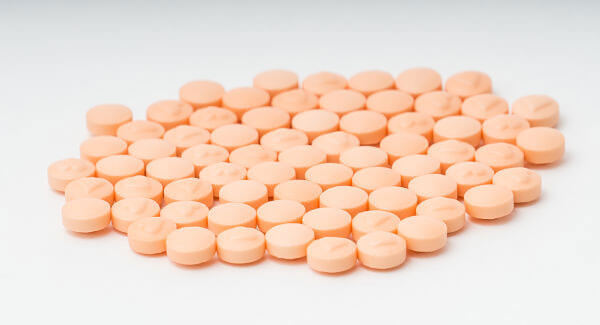The problem with NSAID pain relievers
The use of NSAID pain relievers is out of control. These are drugs like Motrin, Aleve, Celebrex, Mobic, and others that are anti-inflammatories and can help with things such as arthritis pain. Physicians believed they were non-toxic and had few side effects and put them into treatment guidelines. However, new research now shows that we may have many people overdosing on these drugs and risking severe health consequences, including heart attacks, strokes, and GI bleeds.

Do you know which drugs in your medicine cabinet are NSAIDs?
The first step to understanding NSAIDs is knowing what they are and which drugs fall under the NSAID umbrella. NSAID pain relievers are nonsteroidal anti-inflammatory drugs, and they can be over-the-counter (OTC) medications or prescription drugs. Generally, their purpose is to relieve pain and inflammation.
Advil (ibuprofen) is labeled as a fever reducer, so maybe you start taking the recommended dose of Advil to battle a fever. But what else is in there? Maybe a prescription of Celebrex or Mobic for your arthritis or perhaps some OTC Menstridol (naproxen) to occasionally relieve menstrual cramping. Or maybe Aleve, which is also naproxyn, because the TV commercial says you only need to take one pill. Maybe the medicine-cabinet staple is in there—a bottle of aspirin for those pesky headaches. They’re all different drugs, right? One for fever, one for arthritis, one for menstrual cramps, and so on? Technically, yes, but, unfortunately, all of the drugs above are NSAIDs. And NSAIDs, even in recommended dosages, are riddled with dangerous, even life-threatening, side effects.

NSAID side effects – reasons to stay away from NSAID pain relievers
There has been a flood of research published in recent years on the potential side effects of NSAIDs. While some of these results are simply concerning, many more are disturbing and even deadly. As if the risk of death from a heart attack or GI bleed isn’t troubling enough, there are many, many more reasons to stay away from NSAID pain relievers.
Let’s take a look at some of these:
Additionally, NSAIDs, even in normal dosages, can be risky, but many consumers exceed these minimum NSAID dosages without even knowing it. How? Either by taking too much (the label directs one pill, but the consumer takes two) or by taking two drugs for two separate conditions and not realizing both are actually NSAIDs. This unintentional overdosing significantly increases the risk of dangerous side effects and can even cause accidental poisoning, so if you’re going to take the risk with NSAIDs, make sure you are well aware of the maximum dosages.

The dangerous interaction between NSAID pain relievers and stem cells
We always tell our patients get off NSAID pain relievers prior to a stem cell procedure, which can sometimes be quite difficult as many patients take this stuff just to function normally. They begin to get aches and pains in middle age, and rather than managing them with diet, exercise, and natural supplements, like high-dose fish oil, curcumin, or glucosamine/chondroitin, they begin to pop Motrin pills like they’re scarfing M&M’s. The problem is the relationship between NSAIDs and stem cells as these little pills will mess up your stem cells. Let’s look at how that works…
New cartilage is made in your joints all the time. It happens by local stem cells differentiating into cartilage cells to replace the dead ones. The new cartilage cells then lay down the stuff where they live, known as extracellular matrix, or ECM. In a joint, the cartilage cells, plus the ECM, are what we call “cartilage.”
The composition of the ECM is critical so it can resist force. For it to be strong enough, the right type of collagen has to be produced. Each organ or body part can be engineered to have certain properties, like more or less stretch or more or less firmness, just by altering the composition of the different collagen types. One of the things we know about bad cartilage (like the type found in arthritis) is that it has more collagen X (ten). This makes it too soft and unable to withstand normal forces.
A recent study looked at Naprosyn, also known as Aleve, as well as other NSAID drugs. The authors had found in a prior study that Naprosyn (but not other NSAID drugs) altered gene expression in stem cells for type-10 collagen (caused the cellular machinery that makes this protein to be stuck in overdrive). This study looked at stem cells from normal healthy patients and from patients with arthritis. The cells were then exposed to Naprosyn or not and then given clues to become cartilage cells. The cells exposed to Naprosyn made too much collagen X. Interestingly, this was happening because one of the inflammatory pathways that Naprosyn and other NSAIDs doesn’t block was also placed into overdrive. Also very interesting is that there are supplements, like high-dose fish oil and curcumin, that we know block this other inflammatory pathway (lipoxygenase).
So is Naprosyn the only bad actor? Not in the least. Here’s another study showing that Voltaren causes stem cells to turn into fatty pieces rather than turning into normal tendon cells. Other studies have shown that NSAIDs also mess with new bone formation and healing. However, big pharma has been working overtime to produce research reviews to block this one as this messes with orthopedic surgeons prescribing NSAIDs for post-op patients.

So is there a safe alternative to NSAID pain relievers?
Whether it’s a prescription NSAID, such as Voltaren (diclofenac) or Celebrex (celecoxib) or even a seemingly more innocuous over-the-counter NSAID (don’t be fooled just because you can buy Advil [ibuprofen] right off the shelf—these are very dangerous drugs), the side effects apply.
So the benefits of taking an NSAID must heavily outweigh the potential side effects. If the benefits are justified (e.g. to control a dangerous fever), it’s imperative that you take no more than the recommended dosage. Always read the label or follow your physician’s instructions, and know which drugs in your medicine cabinet actually are NSAIDs, so you aren’t taking multiples.
Normal inflammation is how we heal. So from a 30,000-foot view, blocking it in a patient trying to heal or undergoing a treatment like stem cell therapy, where healing is the primary aim, seems ill-advised.
Popping an NSAID might be easy, but there are things you can do to end your reliance on NSAIDs for pain. Start an exercise program focused on strengthening. In the meantime, if pain relief is necessary, there are high-quality supplements that can help, such as glucosamine and curcumin that can reduce inflammation, address arthritis pain, and even protect cartilage.Click here to download our suggested NSAID alternatives that do not impair your healing mechanisms.
Looking for an alternative pain treatment to NSAID pain relievers? If you have orthopedic issues, please contact our patient care team to discuss stem cell and blood platelet treatment options.
Originally published on Regenexx.com, written by Dr Centeno.
Further Reading – Original blog posts::
https://regenexx.com/blog/diclofenac-one-nsaid-more-dangerous/
https://regenexx.com/blog/side-effects-of-nsaids/
https://regenexx.com/blog/nsaids-vs-exercise-for-knee-arthritis/
https://regenexx.com/blog/nsaids-and-stem-cells/
https://regenexx.com/blog/can-nsaids-make-arthritis-worse/